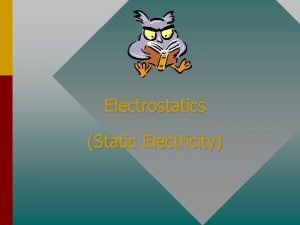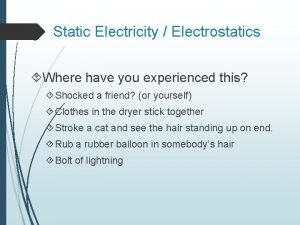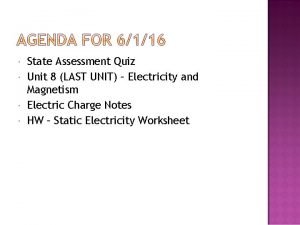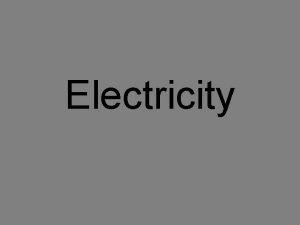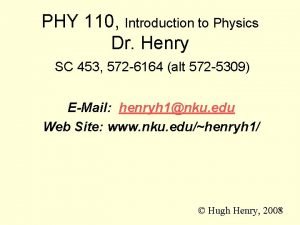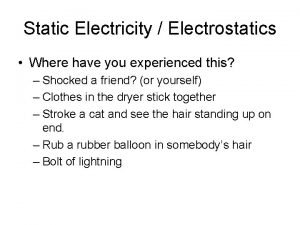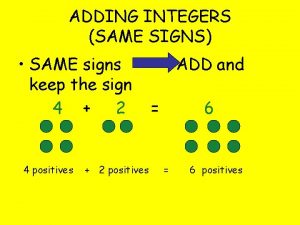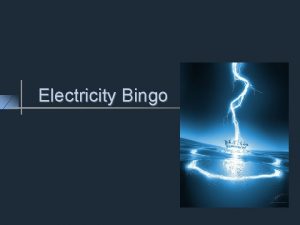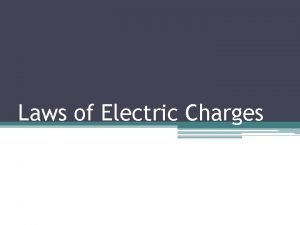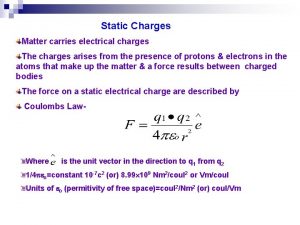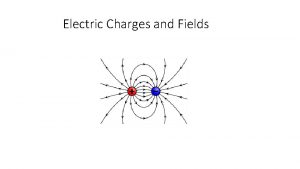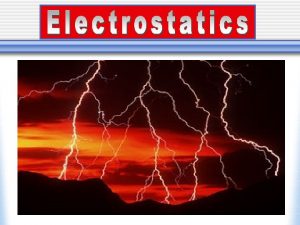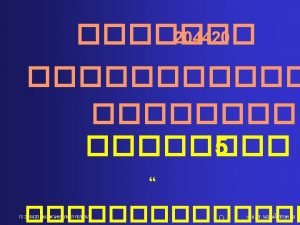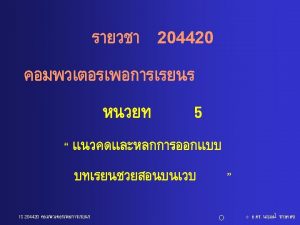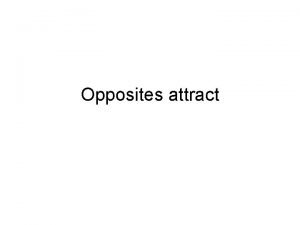Electric charges of the same sign 1 attract










- Slides: 10

Electric charges of the same sign 1) attract each other. 2) repel each other. 3) exert no forces on each other.

Law of Conservation of Charge • The amount of charge in any closed system is always constant.

True or False: Charge can never be created or destroyed.

Electron-positron annihilation http: //hyperphysics. phy-astr. gsu. edu/hbase/particles/imgpar/annih. gif Positron(Electron) charge: (-)e = (-)1. 6022 x 10 -19 Coulombs

Conductors and Insulators • With rare exception, a material is either a conductor or an insulator. • A conductor has some mobile charges that can flow easily. • In an insulator, little or no charge can flow.

A charged rod is brought near (but does not touch) a neutral conducting sphere. 1) 2) 3) 4) The sphere is attracted towards the rod. The sphere is repelled from the rod. The sphere doesn’t move. The answer depends on the charge of the rod.

Electroscope http: //www. engr. uky. edu/~gedney/courses/ee 468/expmnt/escope. html

If you bring a positively charged insulator near two uncharged metallic spheres that are in contact and then separate the spheres, the sphere on the right will have 1) no net charge. 2) a positive charge. 3) a negative charge.

A charged rod is brought near (but does not touch) a neutral insulating sphere. 1) 2) 3) 4) The sphere is attracted towards the rod. The sphere is repelled from the rod. The sphere doesn’t move. The answer depends on the charge of the rod.

Induced atomic dipole
 Electron charge
Electron charge Electric charges and electric forces lesson outline
Electric charges and electric forces lesson outline Like charges attract or repel
Like charges attract or repel Like charges attract or repel
Like charges attract or repel What kind of circuit is this
What kind of circuit is this Opposite charges attract.
Opposite charges attract. Like charges attract or repel
Like charges attract or repel Law of electrostatics
Law of electrostatics Adding integers with the same sign
Adding integers with the same sign Like charges blank and opposite charges blank
Like charges blank and opposite charges blank All the signs for driving
All the signs for driving


